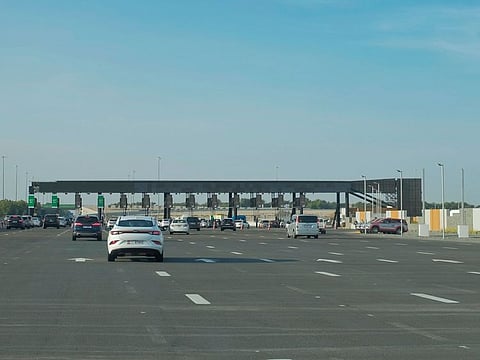Abu Dhabi entry: First look as border scanning of commuters for COVID-19 begins today
Vehicles line up at checkpoints, cross over smoothly into the capital

Abu Dhabi: It only take seconds for commuters to be scanned at the checkpoints near Ghantoot on the Dubai-Abu Dhabi border before they can enter the capital.
The scanner, which can detect signs that a person may have coronavirus, were introduced this morning in an effort to check the spread of COVID-19.
When Gulf News reached the chekpoints from Dubai this morning, vehicles were lined up at more than 12 gates. The crossover to Abu Dhabi was smooth after a short stop.
The screening involved the use of EDE scanners as per the new order by Abu Dhabi Crisis, Emergencies and Disaster Management Authority.
The scanners have been in use already at a number of public venues, including malls, gyms, amusements parks, cinemas and even certain cafes and restaurants in Abu Dhabi.
Anyone with signs that they may have the virus will be sent for a free rapid antigen test which delivers results in about 20 minutes.
If the test is positive, those who are residents of Abu Dhabi should isolate for 10 days. They will be fitted with a tracking wristband for this duration.
However, commuters from outside Abu Dhabi must return to the emirate from which they traveled and notify the local health authority of their test result.
Anyone entering Abu Dhabi emirate will need to undertake the EDE scan regardless of whether or not they have the AlHosn Green Pass.
In September 2021, a border checkpoint system that required drivers from Dubai to stop to show a negative PCR test was lifted after 14 months.
How does the EDE scanner work?
EDE scanners use advanced technology to rapidly detect potential COVID-19 cases. They do so by measuring alterations in electromagnetic waves, using a smartphone connected to a sensor. Electromagnetic wave patterns change when RNA particles of the COVID-19 virus are present. The results of the scan are therefore near-instantaneous.
The screen on a scanner turns green to show that the person is healthy, whereas an alert in red appears to indicate a possible COVID-19 infection.
Sign up for the Daily Briefing
Get the latest news and updates straight to your inbox
